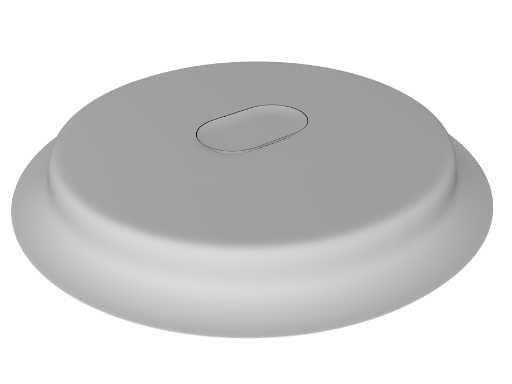Murphy's flexibility for loose Legendrians embeddings
This page is based on the introduction of a talk I gave in University College London on July 28th 2014 during the Workshop on Contact Geometry in Dimension Three and Higher. It is an introduction to Murphy's flexibilty theorem about isotopy of Legendrian embeddings.
In this discussion R⁵ is seen as the space of non-vertical planes tangent to R³. The point with coordinates (x₁, x₂, z, y₁, y₂) is then seen as the plane spanned by ∂/∂z + y₁ ∂/∂x₁ and ∂/∂z + y₂ ∂/∂x₂ attached at the point (x₁, x₂, z) in R³. The relevant contact structure on R⁵ is then ker(dz - y₁dx₁ - y₂dx₂). The map sending (x₁, x₂, z, y₁, y₂) to (x₁, x₂, z) is called the front projection. Any surface S in R³ which is transverse to the vertical direction lifts to a Legendrian submanifold {(x, TxS) ; x ∈ S} whose front is S. Our goal is to construct Legendrian isotopies (homotopies of Legendrian embeddings) so we need at least two Legendrian submanifolds.
We consider first the Legendrian in R⁵ whose front projection in R³ is shown below (click the video to get a better view of their structure).
This projection has a circle of cusp singularities but these singularities lift to smooth Legendrians. They are analogous to the cusp shown in the next video showing an helix in R³ seen from different angles.
We next consider a variation of the above front where the bottom part of the saucer has been pushed up along an annulus.
The above front has self-intersections but the lift is still embedded because the tangent spaces of different branches are distinct at each self-intersection point.
Let's try to construct a Legendrian isotopy between the above Legendrians by pushing down the difference.
It seems something went wrong so let's have a closer look.
The problem is self tangency points. What we constructed was a homotopy of Legendrian immersions but with a circle of self-intersection in R⁵ at one time during the homotopy.
Let's relax the Legendrian condition a bit and decouple the front projection and the non-vertical plane field component in order to get a homotopy of embeddings. Along the ridge where we had self-tancency, we tilt the planes.
This time there is no more self-intersection in R⁵. This construction gives a homotopy through embedded submanifolds whose tangent spaces are arbitrarily close to Legendrian. In particular we learned that our two favorite Legendrians are smoothly isotopic.
In order to replace this by a Legendrian isotopy, we need the tangent space
to our front to approximate the tilted planes. For 1-manifold in dimension 2, this
kind of problem is resolved by the following idea which approximate with fixed end-points
a horizontal line by a nowhere horizontal curve at the cost of introducing cusp
singularities (that we don't fear).

We want to use this idea but with a transverse cut-off. What we get is a wrinkle
Note that wrinkles can appear and disappear by scaling.
So we can implement a wrinkle on the ridge instead of tilting planes.
What went wrong is that we used singularities which do not lift to embeddings in R⁵. The wrinkle birth was the worst but the wrinkle tips are also bad. More precisely, what we can get here is a homotopy of smooth maps which are Legendrian embeddings except at one or two points where the differential of the parametrization is not injective. This is actually how far we can get. Ekholm, Etnyre and Sullivan proved that our two Legendrian are not Legendrian isotopic. Actually, if we see R⁵ as part of S⁵ then the first one is the boundary of a Lagrangian disk in B⁶ whereas the second one is not.
So we change slightly our two Legendrians by adding on the top part of the saucer a circle of zig-zags.

This zig-zag can be squeezed in the middle until it becomes microscopic so that the Legendrian becomes C¹-close to the same Legendrian without zig-zag. It can then become a microscopic tentacle (marked by a black curve below) which travels along the Legendrian submanifold toward the place where we previously needed a wrinkle.
There is no more nasty singularity because what used to be the wrinkle is now a thickened zig-zag connected to the microscopic one. We can then push down, retract the tentacle and regrow the original zig-zag.
This is Murphy's flexibility theorem. If two Legendrian embeddings are formally isotopic, one can construct a homotopy of embedded submanifolds which are almost Legendrian and then upgrade it to a homotopy of wrinkled Legendrian embeddings. In general one cannot go further but if both Legendrians have convenient zig-zags then we can get rid of wrinkle singularities to get a genuine Legendrian isotopy. Murphy's paper provides some more details.